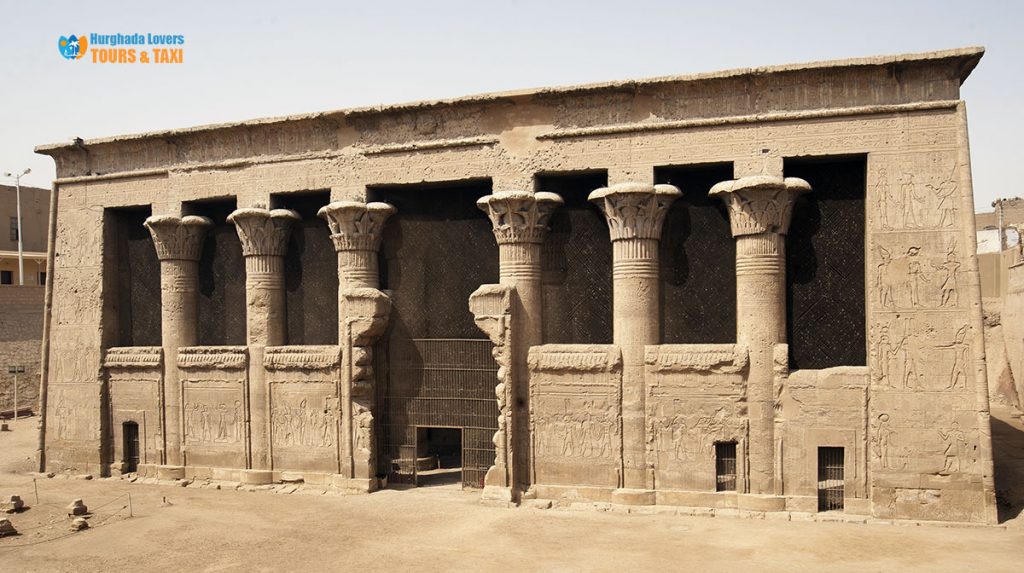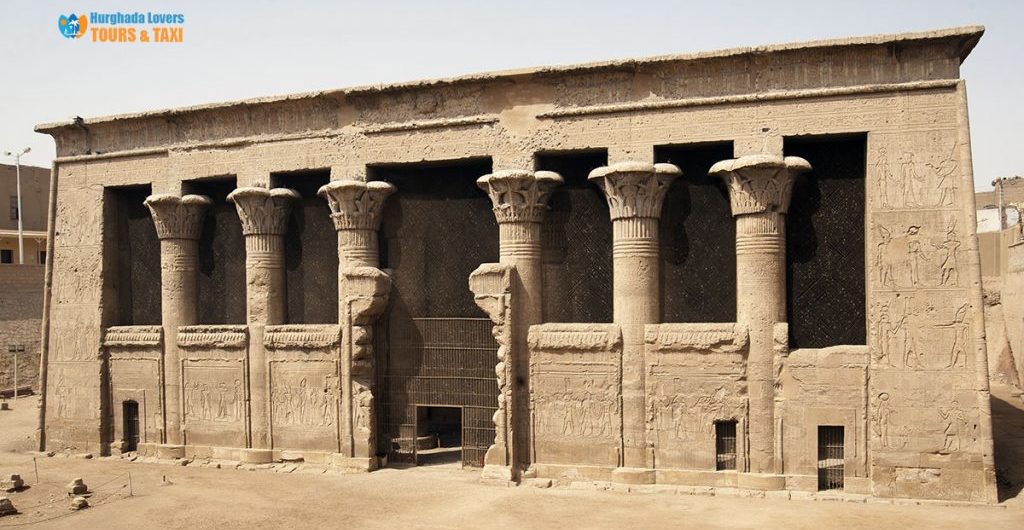The Temple of Esna in Luxor Egypt | Facts & Secrets Pharaonic Temples
| Who built Temple of Khnum | Ticket Prices | Opening Hours | Why was Built?
The Egyptian Temple of Esna, History Of Egyptian & the construction of the most important Pharaonic Temples in Luxor of Ancient Egypt.
Hurghada lovers Offer Luxury Hurghada to Luxor Tours | El Gouna to Luxor Tours | Makadi bay to Luxor Tours | Sahl Hasheesh to Luxor Tours | Soma bay to Luxor Tours.
The Temple of Esna – Temple of Khnum in Luxor Egypt
The facts and secrets about the ancient Egyptian temple revealed by the scenes engraved on its walls that tell us the stories of the kings and emperors who participated in its construction. In addition to the schedules of the visits of the temple and the prices of the tickets of the visit of the temple & Things to Do in Egypt.
The time of the construction of the temple: The Pharaohs Middle Kingdom between the years 1991 and 1778 BC. J.-C.
The duration of construction: 400 years.
Who built The Temple of Esna Luxor?
King Thutmosis III “Egyptian Pharaohs kings” of the 18th Dynasty of the New Kingdom era but the current temple dates from the Greco-Roman era when Esna became the third capital of Upper Egypt after Memphis and Thebes.
Why was the Temple of Esna built?
The Temple of Esna is dedicated to the god Khnum the god of the Nile depicted with a ram’s head. Next to Khnum in Esna there are other deities like Neith the ancient goddess of war and weaving, Heka the goddess of magic, Satet the goddess of the Nile and the goddess Menhit the lioness goddess.
The discovery of the temple of Esna:
- The Temple of Esna was discovered in 1843 at the time of Mohamed Ali Pasha the governor of Egypt and subsequently the temple was cleaned and restored.
- The French Egyptologist Jean François Champollion discovered inscriptions in 1828 that date from the time of King Thutmosis III.
The interior plan of the Temple of Esna:
As soon as you enter the Temple of Esna you will admire the architecture of the temple: the hypostyle hall, the sacred area of the temple and the exhibition.
Visiting the Temple of Esna awakens the spirit of adventure and gives you the feeling of explorers as the temple is built 9 meters below the level of the city.
The engravings can be admired in the Hall engraved on the hypostyle hall of the temple and the rest of the temple is below the present city of Esna which gives you the impression that the temple stands on a low ground in the middle of the city of Esna.
Despite the presence of the stone blocks that are witnessed on the construction dating from the time of King Thutmosis III and which were reused by the Greeks and Romans the oldest part of the temple is currently the back wall of the temple which bears reliefs and inscriptions that date from the time of Kings Ptolemy VI and Ptolemy VIII.
The rest of the temple of Esna:
The Temple of Esna was built by several Roman emperors such as Emperor Claudius (41 – 54 AD) and Emperor Dicius (249 – 251 AD).
As soon as you enter the temple of Esna your eyes will be attracted by the sublime work of the ceiling of the hypostyle room carried by 24 polychrome columns the capitals are of rich composite style with its varied botanical motifs and its remarkably well preserved colors.
You will also see on the columns registers that show the Roman emprors celebrating religious festivals with a multitude of scenes of offerings in front of the deities venerated in the temple.
Among the famous scenes in this temple the scene of the Roman emperor Trajan during his ritual dance in front of the goddess Menhit.
Also a scene on the north wall of theTemple of the Empror who hunts wild birds as a symbol of driving evil spirits out of the temple. In the eastern corner of the temple we find the name of the god Khnum in a rather mysterious hymn accompanied by a multitude of representations of crocodile and this same hymn is repeated in the opposite angle but accompanied by a multitude of representations of the sacred animal of Khnum the ram.
You can also see on the ceiling astronomical scenes on the north side there are Egyptian astronomical scenes and on the south side Roman astronomical scenes.
The hypostyle hall contains 24 rich columns with scenes that describe the religious festivals celebrated in the temple such as the feast of the raising of the sky on the columns and the feast of the God Khnum in front of the potter’s wheel accompanied by texts that date from the Ptolemaic era.
What are the gods who were worshipped in the temple of Esna?
Khnum: the chief god of the potters who worked on his wheel the body and the double of all living beings. He was also responsible for the flood that brought back water from the Nile and the rich black silt that fertilized the Egyptian land every year. Khnum was depicted with the body of a man and the head of a ram.
Khonsu: the god of the moon, he is the son in the triad of Karnak with Amon-Ra and Mut and he is also the third member of the triad of Kom Ombo with Sobek and Hathor.
Menhit: the goddess wife of Khnum and she was depicted with the body of a woman and the head of a lioness.
Neith: The goddess of war one of the oldest goddesses of Egypt her main temple was in Saîs the ancient capital of the delta and she is the goddess of war.
Heka: the goddess of war.
Anubis: the god of mummification, leader of the momifiers and the guardian of the Necropolis. He was depicted in the form of a black jackal.
N.B: All these deities were part of the beliefs of the ancient Egyptians.
You can visit in Esna and not far from the temple two Coptic monasteries that date from the 4th century, the Monastery of Menabos and the Monastery of the Martyrs.
On the walls of the temple of Esna were the texts that told us the legend of Khnum the Creator on the wheel of the potter, the legend of the conflict between the god Ra and humans called the destruction of humanity as well as the sacred journey of Neith from Saîs to Esna.
You will also find scenes of rituals and offerings in front of the temple deities depicting Ptolemy VI, the Roman emperors Claudius, Trajan, Geta, Septimus Severus and Marcos Aurelius.
The Esna region:
Esna was named Latopolis in Greco-Roman times. It is located on the west bank of the Nile at 55 km. south of Luxor and the temple is dedicated to Khnum, Khonsu, Neith, Satet and Menhit.
Esna was a center for trade with Sudan, especially through the oasis of Karkur.
The address of the temple of Esna:
The city of Esna, Luxor, Egypt.
Visiting hours:
Monday : 09h00 to 17h00
Tuesday : 09h00 to 17h00
Wednesday : 09h00 to 17h00
Thursday : 09h00 to 17h00
Friday : 09h00 to 17h00
Saturday : 09h00 to 17h00
Sunday : 09h00 to 17h00
Prices for visiting:
Foreign tourist ticket price: 80 L.E.
International student ticket price: 40 L.E.
Egyptian tourist ticket price: 10 L.E.
Egyptian student ticket price: 5 L.E.
Author & Writer: Tamer Ahmed Abd elfatah Yousif


